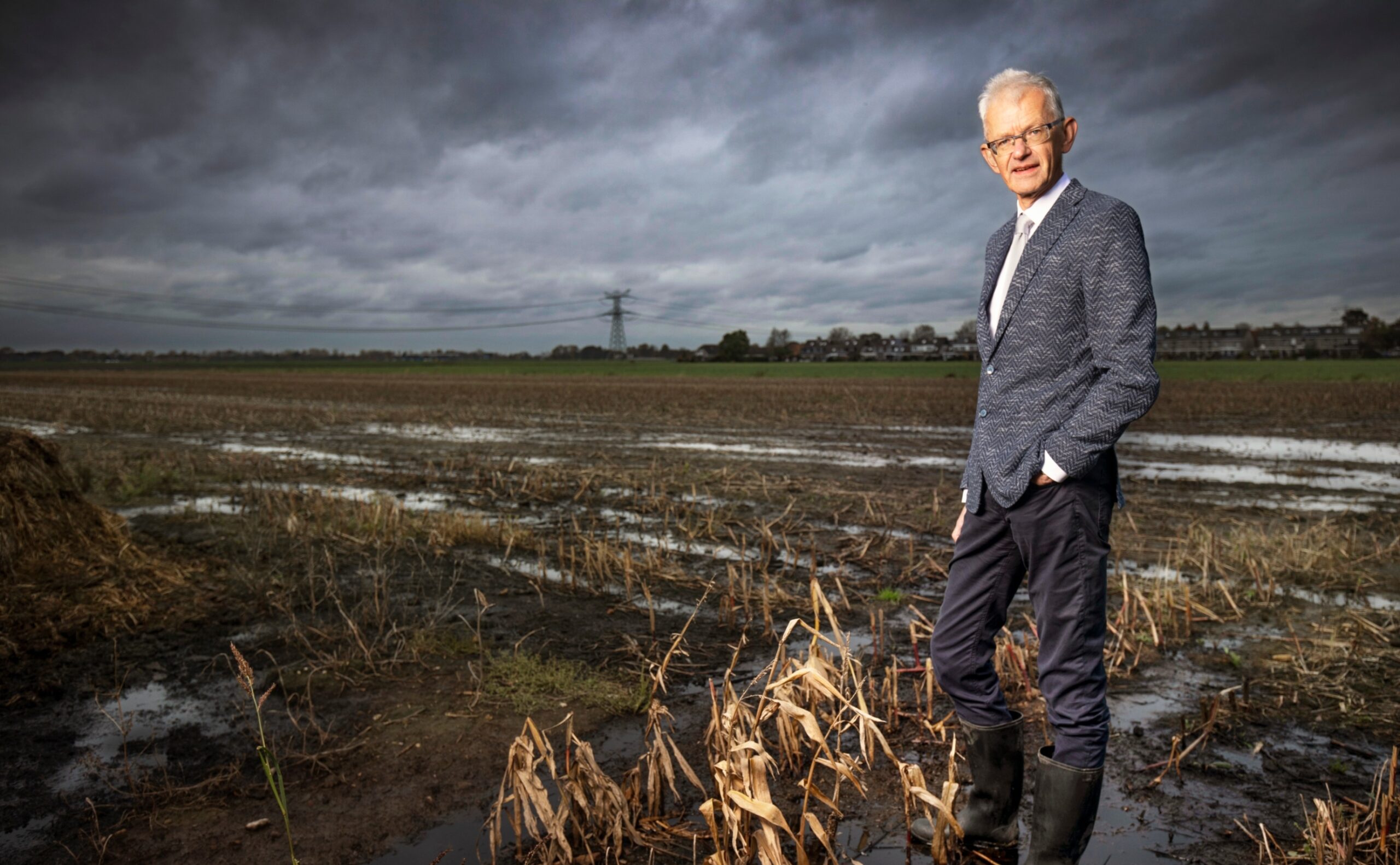Over the past few months, European heads of government have come to an agreement on a new EU agricultural policy. Krijn Poppe, a Wageningen researcher and adviser on food policy, puts the new policy in perspective – for the last time before he retires.
European agricultural policy is being reformed. In what sense?
‘The first pillar of the EU policy, income support in the form of a subsidy per hectare for farmers, will be changed. At the moment, Dutch farmers get 375 euros per hectare. Once the reforms have been approved by the European Parliament, they will get 300 euros per hectare, and they can recoup the rest with ecosystem services such as herb-rich field edges, meadow bird management measures or CO2 sequestration in the soil.
Farmers can sign up for this eco-subsidy on a voluntary basis. Between 60 and 80 per cent of Dutch farmers are expected to do so, which will result in subsidies of up to 100 euros per hectare.’
What good is an extra 75 or 100 euros per hectare to the farmers?
‘Most Dutch farmers need to make between 1800 and 2000 euros per hectare, so in that light, 75 euros is a drop in the ocean. But farmers could still benefit from it. If an arable farmer with 100 hectares of land creates flowering field edges, he will be compensated for all those hectares and could earn 10,000 euros from ecosystem services. That soon adds up.’
The government should support farmers with digitalization
But the environmental organizations were not satisfied?
‘The environmental organizations were hoping for more than 20 per cent for ecosystem services, so that the agricultural policy would dovetail with European Commissioner Frans Timmermans’ Green Deal. They are disappointed now. But this is a compromise – a lot of Eastern European countries would prefer a fixed subsidy to an eco-subsidy of this sort. Each EU country now has to make its own plan for agricultural development, for compensation for ecosystem services, and for the criteria which farmers have to meet to qualify for EU support.’
Is this change part of a trend?
‘The EU agricultural policy progresses in small steps. It is always a compromise between conservative member states with a lot of farmers and progressive countries where environmental organizations and scientists are more influential.
Those small steps don’t have much of an impact, but changes to policy instruments do have a lasting effect. First we had price support, then quotas, then uniform income support, and now green services. But you won’t meet your climate targets with 20 per cent green services in the EU budget. To do that, you’d have to increase that percentage.’
What does this reform mean in the Dutch context?
‘With this money, you can stimulate strip cultivation, create financial incentives for raising the water level in the peaty soils areas or stimulate the use of green fertilizers to cut emissions from the soil. But the downside is that you have to apply for the eco-subsidy every year, and farmers won’t make systematic changes to their farms for annual subsidies. They could link the subsidy to sustainability measures for the long term, such as the Better Life label.’
Has Agriculture minister Schouten’s circular agriculture run out of steam?
‘The implementation of the approach has stalled because farmers don’t see good financial prospects. A lot of farmers want to participate but there is no blueprint or business model. And anyway, closing the cycle doesn’t solve all the problems, such as the climate goals and land subsidence. We have a liberal policy at present. As long as the market and consumers won’t pay for it, we won’t make headway with making agriculture sustainable.’
There is a culture war going on between the fans of export agriculture and the environmentalists
What needs to happen, in your opinion?
‘The Dutch government should take the lead again, like it did in the 1950s and 60s. Then the government took care of the modernization of Dutch agriculture, using instruments such as land consolidation. It is now time that the government supported farmers and consumers in digitalization.
This can help farmers to make their production processes transparent and it can help consumers to adopt a healthy lifestyle and diet. Then digitalization contributes to sustainable agriculture, as long as all the data and algorithms do not fall into the hands of a few big companies. And also, the government should make regional land use plans, allocating land to housing, solar farms and agriculture.’
How can the government solve the nitrogen problem?
‘The central government can formulate a national objective for, say, halving emissions of greenhouse gases, nitrogen and ammonia. To achieve those objectives, you need emission rights and quotas for individual companies. Those emission rights are controlled by sensor networks on the farms. Such digital tools make food production transparent. You can hold the farmers accountable and if they perform well, they can be given more scope for development.’
Why isn’t this innovation process getting off the ground in the Netherlands?
‘That is partly because of the make-up of the coalition, but a more fundamental problem is the lack of shared vision. There is a culture war going on between the fans of export agriculture and the environmentalists. They are locked in a battle for the Dutch countryside. What should it be used for: housing, wind farms, livestock farming or nature? As long as there is no consensus on that, the politicians will be kept busy firefighting.’

 Krijn Poppe. Foto: Harmen de Jong
Krijn Poppe. Foto: Harmen de Jong